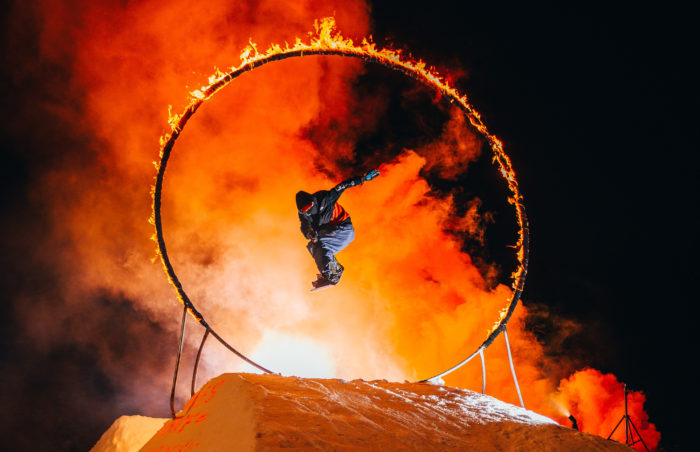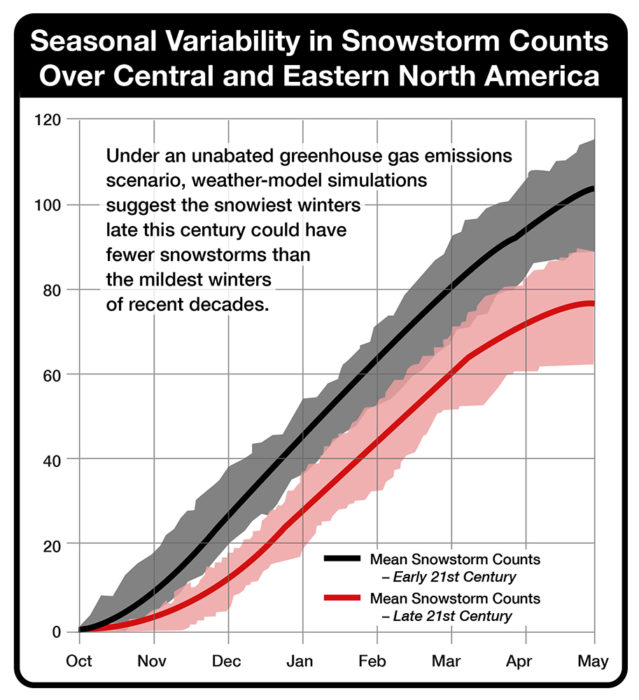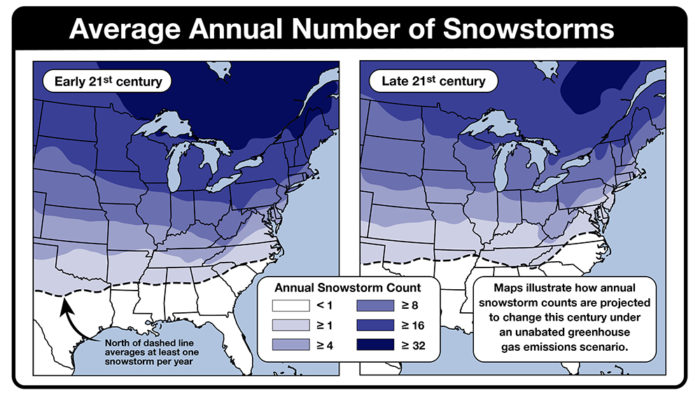
Average snowstorms could drop by 28% in central and eastern North America, according to a new study by Northern Illinois University. The scientists predict American winters might experience significant decreases in the frequency, intensity, and size of snowstorms, by the last decade of this century.
They predict the snow season will start later and end earlier. Shoulder-seasons could see the most notable snowfall changes. Snowstorm counts are projected to decrease in October by 85%, November 48%, and April 61%.
This study is first to objectively identify and track individual snowstorms in the distant future, from minor snow accumulations, average winter storms, to crippling blizzards. If the greenhouse gas emissions continue to rise at the given rate, there could be an average of 38% loss in snowstorm size and a reduction of one-third in the amount of snow or frozen precipitation.

Researchers at the National Center for Atmospheric Research created a supercomputing data set for NIU Professor of Meteorology Walker Ashley and lead author of the study, NIU Meteorology Professor Victor Gensini, and Louisiana State University alumnus Alex Haberlie to study how climate change will impact future wintry weather. The scientists studied over 24 years in the past and future weather platters. They tracked and identified nearly 2,200 snowstorms across central and eastern North America over a grid spacing approximately four kilometers (2.5 miles). The simulations were in high resolution which allowed for the examination of snowstorms in much greater detail than done previously.
The size of the most extreme snowstorms, such as those that produce blizzards, are projected to decrease by 32%.
“A milder winter not only reduces the number of snowstorms per season, but it also reduces the size of the snowstorms when they do happen.”
– Alex Haberlie
The scientists predict regions in the northern US that historically had experienced frequent heavy winter snows would see overall snowstorm reductions of 30% to 50%. With the high emissions scenario, in Americans South, they suggested snowstorms would become a thing past of the past.

Gensini said, there would still be snowstorms in major cities like Chicago, New York, and Boston but the total number of storms projected would decrease especially in early and late winter.
“Significant winters of the past like the ones we saw in the late 1970s would still be possible as we go forward in a future climate, but their likelihood would be reduced.”
Ashley said the study does not dive into climate change though there are things to consider. There could be some serious negative consequences especially for freshwater resource-dependent industries such as agriculture, recreation, refining, manufacturing, power generation, river, and lake transport.
“Snow cover reflects solar radiation and helps cool the environment. So annual reductions in snowfall and snow cover could amplify potential warming.”
The National Science Foundation supported the research.